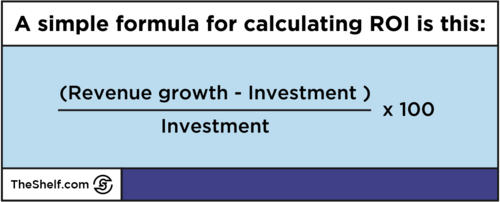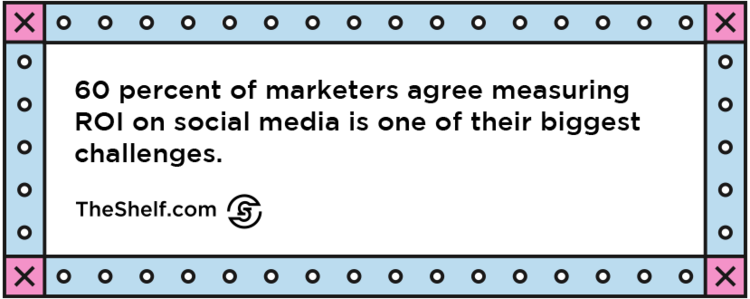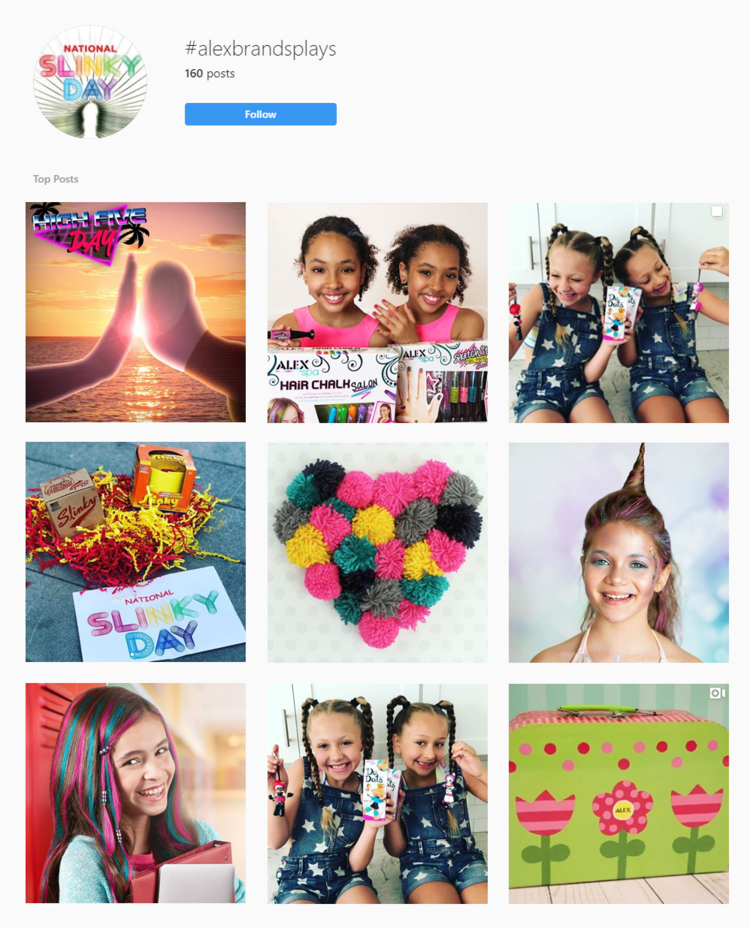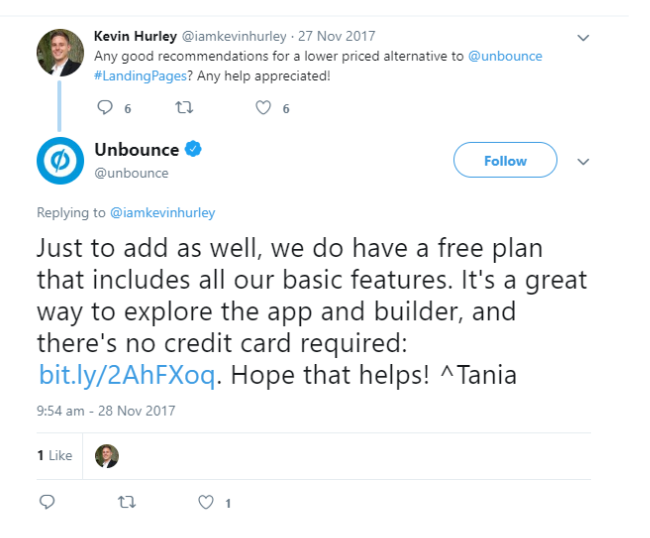Social media ROI. It’s one of the great mysteries of life for many brands and marketers. How the heck do you calculate the ROI of a single tweet? Or the ROI of using Instagram versus Twitter for your business? Or determine which platform brings in the most revenue for your company? Despite knowing that social media is valuable, quantifying that value can be tricky.
Sometimes, marketers are held back by business-minded higher-ups who tell them that without clear evidence of ROI, they can’t invest money into a tactic even when they know it works.

So, in this article, we’ll take a look at how you can measure, track, optimize, and understand social media ROI, and choose which platforms will bring the best results for your business.
What is Social Media ROI?
Let’s start with the basics. The return on investment (or ROI) for any campaign is a crucial metric to track for marketers. It lets you know what’s working and what’s not. If you’re pouring time and resources into a marketing strategy, you need to make sure that you’re getting the most out of it.

When it comes to social media marketing though, marketing teams often struggle to quantify the ROI of a campaign. This is because social media goals are not always based on revenue.
Much of the time, social media marketing goals are focused on things like brand awareness, customer engagement, and website visits. These are not necessarily metrics that easily convert to ROI statistics. But, that doesn’t mean they aren’t important. If these are the kinds of goals you’re aiming for, you can still use them to measure your ROI on social media.

How to Measure ROI on Social Media
I want to do a rundown of goal-setting and ROI for you since “only a fraction” of marketers feel it is measurable. The fact is that despite the issue many of them face with calculating this specific type of ROI, $40 billion was spent in 2020 on social media advertising and that is expected to increase to around $56 billion by 2022.

Now, let’s take a look at some business goals, the cost of running campaigns, and the actual things that matter when it comes to social media ROI.
COUNT THE COSTS OF “DOING” SOCIAL MEDIA
We know what you lose by not investing in social media. But there are costs associated with even the day-to-day management of social media. Before you can calculate how effective your campaign has been, you need to have a clear picture of how much you have invested in your social media marketing. While posting to social media networks, in general, is a free endeavor, there are other factors to consider as investments from your business.
TOOLS
If you’re investing money in scheduling tools, improved analytics, photo or video editing software, research tools, or anything else that helps you build your social media posts and strategy, these costs should be taken into consideration.
For instance, MeetEdgar is a social media scheduling tool. It keeps a virtual inventory of your social media content and automates the publication of your posts based on a post category schedule that you create.
So, for instance, every Wednesday, we have blogger roundups scheduled to go out to our networks on LinkedIn, Twitter, and Facebook. Every Wednesday. Without fail.
So, if you’re not using third-party tools like MeetEdgar or Buffer (which we use as well) in your social media marketing, you should definitely check some out and consider them. The value they can bring to your marketing campaigns far outweighs the initial costs you must spend to get started (plus, most of them offer free trials to front-load value).

ADVERTISING COSTS
If you’re including things like boosted posts, PPC ads, or other paid advertising as part of your social media strategy (and you probably should be) these costs also need to be factored into your overall investment cost to calculate your ROI.
STAFF
Hiring designers to create marketing assets, specialists to create ad campaigns, influencers to promote your brand, or freelancers to help manage your presence on social media are all great ways to improve your marketing. But they all come with a cost, and this cost will impact your ROI.
TIME
The one resource you can’t replace is time. If you and your team spend 20 hours a week managing Facebook, but only 10 hours a week managing LinkedIn, each platform will have a different investment amount to include.
There’s a monthly subscription fee for MeetEdgar, but the tool literally saves us about 10 hours a week of social media scheduling time, which is the equivalent of $200 to $300 a week in scheduling and curating our social media feeds.
Adding all of these costs together will give you your total investment for your social media marketing efforts.
SET GOALS AND OBJECTIVES FOR EACH CAMPAIGN AND INCLUDE PARTNERING WITH INFLUENCERS IN THEM
Setting goals is an important part of any marketing campaign. Without setting clear goals early on in your campaign, you’re setting yourself up for a frustrating cycle of wondering how well your efforts are working, and what they are actually doing for you.
While goal setting isn’t difficult, it needs to be practical. If you’re rolling out a new software system, having people click through to see or schedule a demo is a much better metric of how well a campaign is working rather than gauging sales. Getting sales is important, but the reality is social media users aren’t on social to find a new piece of software. So, a legit win would be getting them to click through.
Yes, people are becoming more comfortable with buying online, but many are buying as a result of the positive experiences they are having online with different brands. I’m not saying that sales goals aren’t good to set. What I am saying is that you can’t convert customers unless you first grab (and keep) their attention long enough to close the deal.
Consider the usefulness of these social media goals:
BRAND AWARENESS

COPY AND PASTE THIS CODE TO EMBED ON YOUR SITE
Brand awareness is probably one of the most important yet least understood of the SMM goals. Increasing your brand’s awareness is the first step in every marketing sales funnel. People have to see you to do business with you, so knowing how to effectively market your brand across social media helps spread the word about your company, team, culture, brand, and product (because social media success is about way more than just talking about your product).
In a brand awareness campaign, reach becomes really important. So, if you’re going to partner with influencers to announce a new product launch, a new store, or your spring line, you’ll want to target larger influencers because they will be able to reach more people with the announcement.
A successful brand awareness campaign will result in greater visibility, which will lead to more brand mentions, more engagement, more followers, and more people sharing your posts with the people in their own networks.
Donald J Pliner’s #ArtofFun
For its Spring 2017 marketing push, Donald J Pliner launched the #ArtofFun campaign on social media to get eyes on its inventory of edgy mid-priced shoes. This was a brand awareness campaign, meaning DJP wanted to get the word out to as many potential customers (not just random people) as possible about its shoes.
So, we (The Shelf worked on this particular campaign) enlisted a set of confident, fashion-forward millennial macro-influencers who had the influence, the follower numbers, and the engagement needed to help Donald J Pliner get the attention of people who were most likely to “get” his brand’s vibe and want to get in on the extraordinary-ness. These were people who invested in their shoe game.
The campaign produced some really great posts. They were colorful, creative, stylish, and a bit out of step with the typical Instagram posts you see.

UGC AND CREATIVE ASSETS
We’ve done several posts on the topic of user-generated content…
The benefits of UGC.
How to drive sales with UGC.
How to get amazing UGC in your campaigns.
Examples of cool UGC campaigns.
Getting the rights to sponsored content.
We understand that UGC (the posts created by users that get published to different platforms) are the lifeblood of social media and influencer marketing.
For brands, UGC is a powerful word-of-mouth endorsement from key opinion leaders of targeted demographic segments. When presented in the right way, UGC carries more sway than any other type of branded or brand-owned content.
So, we get lots of clients that are looking to get loads of UGC from their influencer campaigns that they can reuse across their own branded social media feeds in paid ads. Basically, they can use UGC as a creative asset in any way they see fit.
Alex Brands – #AlexBrandsPlays
You may not immediately recognize the name Alex Brands, but you know the company’s products. Alex Brands sells some of the most well-known brands in the toy market, like the Slinky and Hot Wheelz bikes for kids. There’s even a National Slinky Day at the end of summer.
Until recently, the company’s primary method of distribution and their way to get new products into new markets was through Toy “R” Us stores. In early 2018, their #AlexBrandsPlays social media campaign was all about boosting visibility by having kid influencers create tons of UGC Alex Brands could use on their own branded social channels.

ENGAGEMENT
Engagement is another popular goal for social media marketing. This goal is focused on encouraging your customers and followers to interact with your brand online. This includes liking, commenting, sharing, messaging, or tagging across social media platforms.
This is a great goal for brands who are focused on a slightly younger audience, as brands appearing authentic and “human” online is a big deal for them.
CUSTOMER SERVICE
With younger audiences fast becoming the majority of spenders across the board, having top notch customer service online is no longer simply an option for brands. Platforms like Twitter are perfect platforms for quick responses and public discussions that show how much you value your customers.
Measuring this can take the form of response times, response rates, and the resolution of problems via social media.
Which Social Media Networks Will Deliver the Best ROI for My Campaign?

The reason you’re reading this is to determine which social media networks provide the greatest ROI, right? So, let’s dive into some platform-specific analysis to see where your business or brand can get the most bang for your buck.
The results of any social media campaign always goes back to the goals you set. Your goals also determine which social media platforms you use to accomplish your goals. While one platform may bring in amazing results for one brand, it may not do the same for you if your goals do not align.
For this reason, we’ve organized the top social media networks by the goals they are most likely to help you reach.
FOR BRAND AWARENESS
With over 2 billion users, Facebook is the largest social media network in the world. So, it is highly likely that your target audience is spending time here. Facebook can be a great platform for those who have placed brand awareness as their number one goal on social media.
Facebook’s algorithm shifted in 2018 in favor of personal content over corporate content, putting a thorn in the sides of marketers as their reach was slashed. But, there was a silver lining in the form of Facebook groups and the platform’s new feature that allows pages to post in groups, just like individual accounts.
If you’re leaning toward paid ads on Facebook, “Brand Awareness” is also a campaign goal that you can access in the dashboard of your Facebook ads manager. You can choose ad recall as a goal if you’re working towards ensuring people remember seeing your ad two days later. Marketing is about more than just reaching lots of people; it’s also about sticking in those people’s minds.
If you have a dedicated budget for advertising on Facebook, you’re going to see even better results. According to research by the social media scheduling tool Buffer, Facebook ads can bring in some pretty great ROI. Their experiment found the average price on Facebook for a thousand impressions was $0.59, compared with $3.50 on Twitter. That’s a huge difference.
FOR BUILDING COMMUNITY
Facebook is also a great platform for building a branded or industry-specific group. And if you do that, you’re in luck because Facebook favors group posts more than anything else right now. A Facebook group will enable you to get your content in front of a group of people who have already demonstrated an interest in your content.
Brands can also join and participate in groups as a business page, so social media managers don’t have to worry about their personal brands being overshadowed by their professional brands on Facebook. They can remain separate.
LinkedIn is the home of professionals on social media. There are 40 million decision makers on the platform, so it’s the place to be if you want to establish yourself as a knowledgeable professional, do targeted B2B marketing, and attract new clients to your business.
FOR ESTABLISHING AUTHORITY
LinkedIn is the place professionals go to connect with, talk to, and hear from other professionals. For brands, LinkedIn presents a moderately captive audience who is checking in for one reason and one reason only – to find professional opportunities. Those opportunities could be sharing an interesting post they read, sharing an idea they want to spread, or sharing information about their company and culture.
All these little bits of information will come together nicely to help brands establish credibility and build authority in their specific area of expertise.
FOR WEBSITE TRAFFIC
Let me share some really interesting stats I found at Omnicore.com.
Of the 500 million LinkedIn users, 3 million of them share content weekly, and 1 million users actually create articles for LinkedIn. But here’s the thing: 91 percent of marketing executives peg LinkedIn as the best place to find quality content. It is currently THE #1 platform B2B marketers use to distribute content and LinkedIn makes up half the traffic to B2B websites.
FOR GENERATING LEADS
LinkedIn leads the pack when it comes to using social media marketing to generate B2B leads. LinkedIn accounts for 80 percent of B2B lead generation while Twitter and Facebook account for the other 20 percent.
Sponsored InMail allows users to send personalized messages to other users, regardless if there is an existing connection on the platform.
Brands use Sponsored InMail to facilitate trust with new potential leads, send out invites to webinars or in-person events, and to pitch their services to business owners.
InMail isn’t the only advertising option at your fingertips, though. LinkedIn offers a range of different ways to reach new customers.
Sponsored Content – In the same way you can on Facebook, you can plug some investment into existing posts you’ve sent out from your company page to help them reach more people. This should be reserved for your best performing posts.
Display Ads – These appear in people’s LinkedIn feeds just like Facebook Ads. You can use text, images, and video to attract people’s attention.
Dynamic Ads – These are display ads on steroids. These are shown to people based on their activity, making them hyper-targeted compared to the usual fare.
It almost goes without saying that this platform is great for B2B brands, or those who have services that would benefit busy professionals. This is probably the most niche of all the social media networks, and not everyone will be able to benefit from advertising here. So, make sure you fit the LinkedIn mold before going forward with a campaign on there.
FOR PRODUCT LAUNCHES
Instagram is my absolute favorite platform for engaging and connecting with customers and influencers alike. It reached 1 billion users in 2018 and is only going to get bigger. Thanks to it’s visual nature, content on Instagram is much easier to digest and engage with as it requires less concentration and shorter attention spans.
FOR CUSTOMER ENGAGEMENT
Instagram gives you a number of ways to reach your audience on their platform – all of which encourage engagement and interaction. Because the site is accessed almost exclusively on mobile devices, it’s a place that is ever-present in many of our lives. The platform is key for engagement-based goals as it brings in 10 times more engagement than Facebook does, despite not having as many active users.
Thanks to the “Explore” page and the power of hashtags, discoverability is much higher on Instagram than other social networks, which helps brands to connect with more people. This also means this can be a great platform for reach as well, but you’ll have a more limited demographic than you would on Facebook, which is why we positioned it in this way.
There are two ways to post on Instagram – in the main feed and in your stories. Both offer different advantages, and both should be undertaken simultaneously for maximum impact. Unlike other platforms where engagement is limited to likes and comments, Instagram offers users a number of ways to interact with your content.
If you post to Instagram Stories, viewers can interact in the following ways:
- Swipe up – If you have a following of over 10K and are operating on a business account (which you should be), you can include a link in your story that viewers can access by simply swiping up. Other than this, the only way to include a clickable link is in your bio on your profile. This is an incredibly useful tool for businesses looking to drive web traffic through social.
- Questions – If there’s something in particular you want your followers to tell you about, then you can post a question on your story. With this feature, you’re actively encouraging engagement by giving your followers the chance to speak directly to you. You can then share their answers on subsequent stories to further increase their effectiveness.
- Polls – Polls on Stories are pretty self-explanatory. You pose a question to your followers with two possible answers and all your followers have to do is click one, and you’ve got direct engagement.
Combine all of these with the usual options of liking, commenting, and direct messaging, and you have a catalyst for huge levels of engagement that you just won’t find on any other social media platform.
With more than 100 million in the US alone, the explosive popularity of TikTok is undeniable to anyone keeping an eye on social media trends. Its future in this country, however, is unsure.
Time will tell us a lot about how this new short video technology on Insta will stand up next to TikTok, but here is what we do know so far:
According to Business Insider, “Reels allows users to record and edit short-form videos with audio and music soundtracks — akin to what users already do on TikTok. On the surface, it seems viewing Reels will be a similar experience as viewing TikTok videos: You can like or comment on videos, and click through to see what audio track was used in a specific video.
It appears that Reels videos are limited to 15 seconds, while TikTok extended the maximum length of its videos to 60 seconds and is testing out the idea of extending up to three minutes. Vishal Shah, Instagram’s head of product, says that, “Reels will differ from TikTok in giving users a more built-out augmented reality platform, as well as offering them a way to make short-form videos inside Instagram, a place they already love and know how to use.”
The quality of the user’s experience with Reels compared to TikTok has yet to reveal itself. Still one HUGE plus that businesses and brands can tap into with Reels is influencer partnerships. Whether you are thinking about it or are already actively partnering with micro- or macro-influencers, know this: users who prefer watching video demos of stuff — like trying on new makeup, a box with a coveted clothing item inside be opened and tried on, or kids playing with the hottest new toy on the block — can now experience that joy, along with scrolling through tons of photos and interacting through comments with their favorite influencers (who they trust and value) all in one place.
At the very least, Reels gives you yet another social media marketing outlet to consider for spreading the love for your amazing product, whatever that may be.
Next on the list is Twitter, and this is the place to be if you want to focus on customer service across social media. Thanks to the fast pace of the online world, we are no longer content to sit on hold for hours with customer service teams (not that we ever liked it in the first place), so businesses need to be able to respond quicker than ever.
FOR TALKING WITH EXISTING CUSTOMERS
That’s where Twitter comes in. The fastest moving of all the social networks, it’s the ideal place to keep up with customer requests. Because it’s such a public way of dealing with customer requests, many people love to use this in the hopes of receiving a speedy and positive response, as they know that others will be watching.
This means you need to be quick and prepared to help diffuse any situations as soon as possible. But providing awesome customer service isn’t just limited to direct questions sent your way. Keeping your eye on brand mentions on the platform is another way to make sure your customers stay as happy as possible.

See how Unbounce responds to a brand mention to help their customer as well as turn the situation around in their favor? This is the kind of quick thinking that helps keep your customer service in tip-top shape.
FOR GETTING CLICKS
So, this last one is really from our personal experience. On the word of Gary Vaynerchuk, who said during a keynote (or fireside chat or something) last year that Twitter ads were under-priced, we leveraged the reach of Twitter to promote a downloadable guide to rolling out an influencer campaign ahead of last year’s holiday season.
The response was phenomenal. Within a span of about two weeks, we saw more than 1,000 downloads of the guide.
Here’s the thing, though: Because we weren’t nearly as focused on list-building as we were on testing Twitter’s fire and getting the guide in people’s hands, the landing page for the guide gave visitors the option to opt-in or not. What I mean is they could download the guide and skip town for all we knew. So, despite not NEEDING to opt-in to get the guide, about 1 in 10 did.
So, when it comes to promoting content to get clicks and traffic back to your site, Twitter is a really affordable way to go.
FOR GETTING SHARES
Whether you’re Marvel promoting the next Avengers movie or Daquan spreading the next great meme, your Twitter network is key because so much of your reach on Twitter comes from engaging with and sharing other users’ content,. Creating content specifically to grab the attention of your Twitter followers can help you grow your network and build your reputation in the process.
Final Word
We have to agree with those who claim that measuring ROI on social media really does differ from case to case, but having a firm grasp on your campaign goals is the first step in making sure you get the most out of your marketing.
By understanding your goals, you can understand where to place your efforts on social media. Social media is a great way to bring in customers, engage with your fans, and keep on top of customer service – if you do it right.







